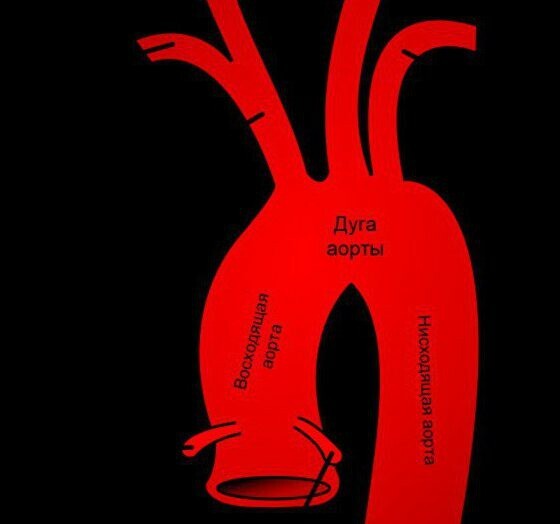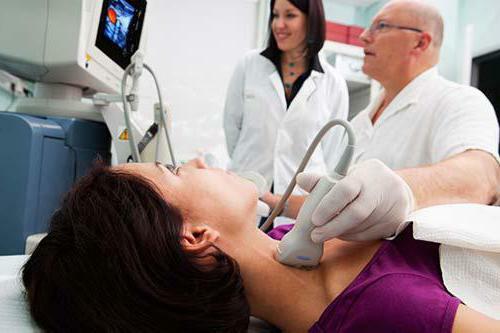What is the brachiocephalic artery. Atherosclerosis of brachiocephalic arteries. Diagnosis, treatment.
Stroke can be prevented if one knows the basics of its occurrence, risk factors, methods of combating causes. About 80% of ischemic strokes occur due to a lesion of carotid or vertebral arteries.
Brief anatomy
The largest vessel in the body is the aorta. It originates from the left ventricle of the heart, then forms an arc and descends vertically downwards, giving away branches along the way to the organs. From the arches, the vessels that feed the upper limbs and the brain drain. These are brachiocephalic arteries( translated from Latin, shoulder braincase).
First come the vessels, located on the left side. These include the subclavian artery, blood supplying the upper limb and a common carotid, which rises vertically up to the head. Behind them follows the brachiocephalic trunk, it is divided into right-sided vessels: common drowsy and subclavian.
Subclavian arteries on their own, give off branches that pass in the transverse processes of the cervical vertebrae and are sent to the head. Common carotid are divided into internal and external. Each of them, performs its function. The internal nourishes the brain, and the outer one - the soft tissues of the head. At the base of the brain, the internal carotid arteries connect with vertebrates, forming the Willis circle. His role is important in that he redistributes the flow of blood, with the defeat of the vessel.

Definition of atherosclerosis
The reason for the reduction in blood supply to the brain, most often, is the atherosclerosis of the brachiocephalic arteries. This is a chronic disease in which the wall of the vessel becomes denser, forming atherosclerotic formations( plaques) on it. The consequences of this process are a decrease in lumen, difficulty in blood flow and a lack of blood supply.
Atherosclerotic altered brachiocephalic arteries create a high vascular risk of developing brain accidents, CNMK( chronic cerebral circulatory failure), stroke.
In recent years, the incidence of stroke has increased in Russia, and this is more than 400 thousand cases per year. About 70-85% of them are ischemic, that is, associated with decreased blood supply due to narrowing of the vessel's mouth or its occlusion. Somewhere 80% of strokes( ischemic) occurs due to atherosclerosis of vertebral or carotid arteries.

Risk Factors
There are many risk factors that can lead to the development of pathology. These include:
- Age( women, with early menopause or over 55, men over 45).
- If in an anamnesis relatives, parents had a stroke, a heart attack, an early onset of ischemic heart disease.
- Smoking.
- Hypertensive disease.
- Total cholesterol( OCS) greater than 5 mmol per liter or low-density lipoprotein( LDL-C) is greater than or equal to 3 mmol / L.
- Triglycerides( TG) more than 2 mmol / l, high-density lipoprotein( CMLV) less than 1 mmol / l.
- Diabetes mellitus, blood glucose more than 7 mmol / l on an empty stomach.
- Abdominal obesity is when the waist is wider than 102 cm in men and 88 cm in women.
Diagnosis of atherosclerosis
Total cholesterol should be OK:
- total - less than 5 mmol / liter;
- LDL cholesterol - below 3 mmol / l;
- HDL cholesterol - greater than or equal to 1 mmol / L;
- TG - less than 1.7 mmol / l.
Even if there are no symptoms of HNMC, but there are two or more risk factors, it is necessary to undergo a screening to exclude atherosclerosis. The annual prophylactic examination includes a study of total cholesterol, with an increase in its level above 5 mmol / l, you need to do an extended analysis( lipidogram).This will reveal the level of lipoproteins and triglycerides. If the lipidogram does not correspond to the norm, or there are complaints about the state of health, it is necessary to further study the brachiocephalic vessels.
In atherosclerotic lesions of brachiocephalic arteries and the emergence of HNMK, there may be the following clinical manifestations:
- Asymptomatic form when the vessels are affected, but the patient does not have any complaints that are characteristic for reducing cerebral nutrition. At a further examination, brachiocephalic arteries have a reduced lumen of varying degrees.
- Transient MK disorders are also called transient ischemic attacks or TIA, when clear neurological symptoms( paresis, paralysis, speech loss, facial asymmetry) appear, but this lasts no more than a day.
- Chronic cerebral insufficiency( dyscirculatory encephalopathy DEP), in which there may be headaches, increased fatigue, dizziness, increased emotionality, sleep disorder, memory, etc.
- Ischemic stroke. His neurological symptoms depend on the vessel in which the blockage occurred, and how long this condition lasts.
Duplex scanning of brachiocephalic arteries
The main research method is ultrasound color duplex scanning( UZDS).

Most often it is performed at the initial stage of the survey. It makes it possible to find out:
- Can the vessels pass.
- Is there any formations( atherosclerotic plaques or thrombi), and if so, how much they overlap the vessel. The growth of plaques can be deep into the vessel - stenosing atherosclerosis or along the vessel - non-stenosing( or slowly stenosing).
- The structure of the vascular wall.
- Is there an anatomical abnormality?
- Blood flow velocity.
With stenosis above 50%, duplex scanning of brachiocephalic arteries, one must undergo an annual check-up for the plaque.
Tactics of management of patients with atherosclerosis of brachiocephalic arteries

Symptomatic patients( with a stenosis of more than 60%) show surgical treatment.
For asymptomatic patients( without symptoms) with two or more concomitant diseases, drug therapy will be the optimal choice.
Methods of surgical treatment include:
- Carotid endarterectomy( CEAE), sleepy connected shunting, prosthetics of the internal carotid artery.
- Carotid angioplasty with stenting( CAPS), stenting of subclavian, vertebral artery.
What kind of operation to conduct, and whether it is needed at all, cardiologists and cardiac surgeons decide, depending on the age, degree of vessel stenosis, concomitant pathology, and other features. That is, after evaluating all the risks. The decision on the operation is taken strictly according to the indications, in accordance with the national recommendations for management of patients with vascular pathology.

In case the surgical treatment is not indicated to the patient, the doctor gives recommendations on lifestyle changes. All risks must be eliminated:
- monitor blood pressure and blood glucose;
- treat co-morbidities;
- quit smoking and give up alcohol;
- observe a diet with restriction of animal fats and carbohydrates;
- pay attention to physical activity, daily walking, morning gymnastics;
- take statins( preparations of this group will be selected by a therapist or cardiologist).
By following all the recommendations of the attending physician, surgical intervention can be avoided.
